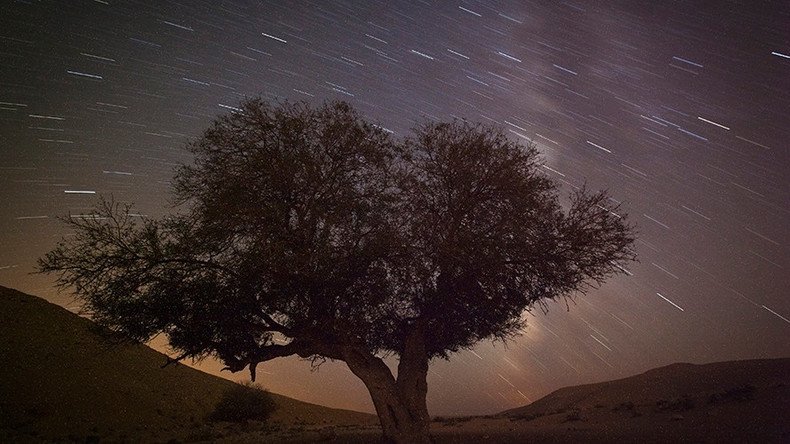Everything you need to know about tonight’s spectacular Leonid meteor shower

Get your sleeping bag and star gazing eyes at the ready, because the Leonid meteor shower is going to peak tonight – late November 17 and into early November 18.
Where
The Leonids can be viewed from either hemisphere, but astronomers recommend lying on the ground to get the greatest vantage point. Which means blankets and sleeping bags in your garden, with possibly a thick coat and warm beverage, depending on your country’s version of November.
FYI: No need for telescopes or binoculars here, the shower will be perfectly visible to the naked eye – granted clouds stay away, that is.
What
The Leonids meteor shower is an annual event that has seen up to 50,000 meteors fall per hour in the past. This year we’re expecting to see a more modest, but still spectacular show of about 10 to 15 meteors per hour.
Keep your eyes on the sky: August 11-12th Perseid meteor shower will 'light up your life' https://t.co/xn7czbC6xbpic.twitter.com/zH1ClOnCbf
— RT (@RT_com) August 3, 2016
The Leonids originated from the Tempel-Tuttle comet and will pass through the Leo constellation at about 44 miles per second (71 km).
How
Yes, the idea of hundreds of flying space rocks hurtling towards Earth may not seem like the most comforting phenomenon. But fear not, as the vast majority are pea-sized chunks that completely burn up in the atmosphere.
A meteor shower basically consists of many, many, space ‘rocks’ (or meteoroids) that are formed from tiny ice particles that break off comets during orbit around the sun. The crumbs of meteoroids then fall from inner space into Earth’s atmosphere as it crosses their path.
April Lyrids meteor shower to reach peak in a matter of hourshttps://t.co/mcRPt3CRBepic.twitter.com/EqtvBApqPf
— RT (@RT_com) April 22, 2016
As a meteor plummets toward Earth at great speed, it begins to burn up and leaves a trail of glowing hot air - which is what many would call a “shooting star.”
Don’t want to miss the next one?
Get prepared for 2016’s grand finale: The Geminids meteor shower peaks on the night of December 13 and into December 14. It’s one not be missed as it’s considered one of the most spectacular showers of the year with around 120 flying meteors per hour. You have been warned.











